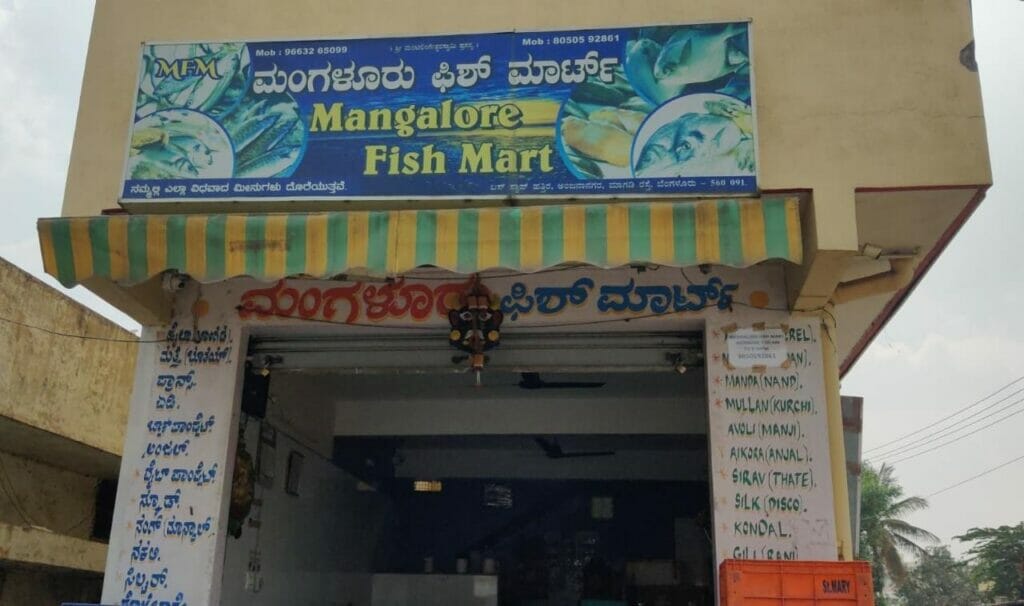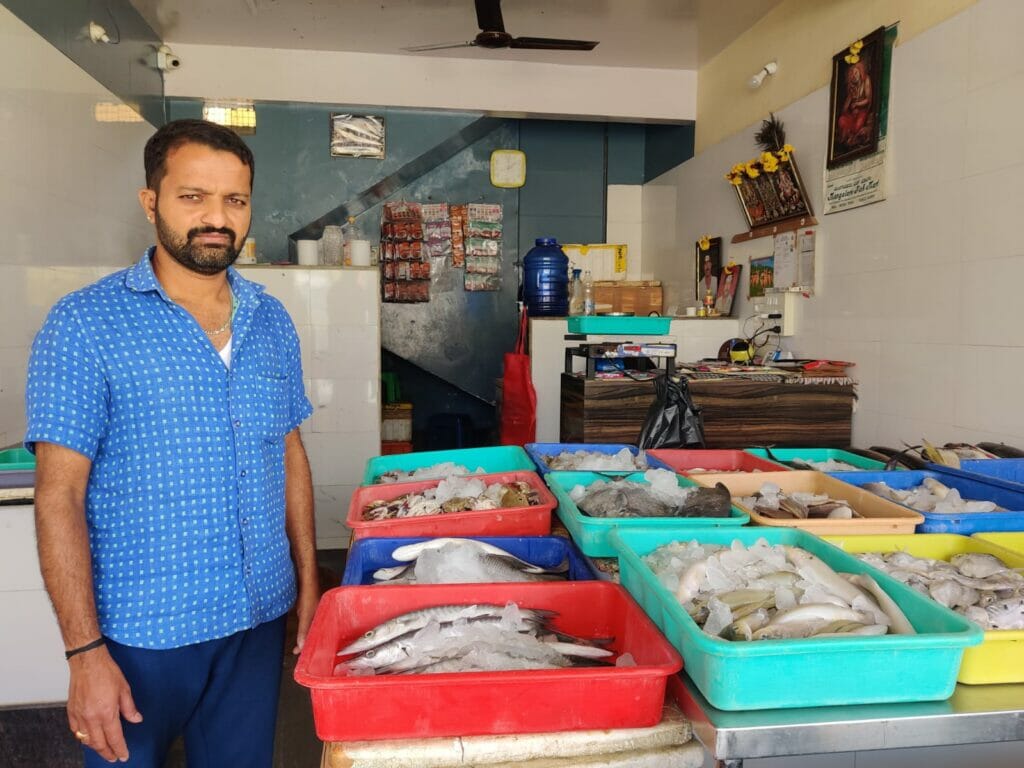According to Hindu mythology, God’s first avatar on earth was a fish. And now scientists reveal that life first developed in the oceans. Whether related to that or not, trading in fish has been an important source of human livelihood and nutrition for aeons. But none of that was even remotely in my mind when I tucked into four nicely cut and cleaned Silver Pomfret fish pieces I had bought from a local fish seller.
With several grocery and fresh meat apps on my phone, it has been a while since I visited a fish shop. As a kid, buying fresh fish early in the morning with my father was a Sunday ritual. With the passage of time, this ritual died but the spicy, richly flavoured fish curry is still served on my plate regularly.
Unlike Cochin or Kolkata, Bengaluru is not really known for fish dishes. But given the state’s long coastline and varieties of fish available in its ocean, I decided to see for myself what the retail fishing trade was like in the city. Especially given Union Finance Minister Nirmal Sitharaman’s mentions of the country’s fisheries industry (see box at the end of the article).
Not that the union budget has any significance for fish sellers like Anand, owner of a local fish shop near my house on the Anjananagar main road, a suburb in Bengaluru. It was a little close to noon when I arrived at his Mangalore Fish Mart. Anand was holding fort behind the counters selling different varieties of fish.
The two side walls at the entrance of the shop lists the different varieties available, both in English and Kannada. Anand waited for me to decide on my purchase and sent his helper boy to assist me.

Anand has been selling fish for eight years now. It is the only business he knows. He makes enough to feed his family of four, consisting of his wife and two children. He opens his shop early in the morning around 7.30 am till 8 pm. But is up and ready much earlier to collect his daily stock from the truck that brings in fresh fish from Mangaluru daily.
Most of Anand’s customers come in the morning. Sardines or mathi, Indian mackerel or ayala are customers’ favourites. By evening Anand would have sold most of his produce, his dark green apron soaked from the day’s labour. Sundays and Tuesdays are the busiest for Anand while Mondays are off. While Anand didn’t share any numbers, he doesn’t see any prospect of expanding his business in the near future, instead focussing all his efforts on this one shop.
Anand doesn’t have a clear cut answer as to why he chose the profession he is in. It was just a way to make a living. As is the story of most fish-meat sellers, like the butcher’s shop opposite Anand’s shop that sells meat.
A street to fish
Yeshwanthpur fish market is one of the busiest fish markets in Bengaluru. The street has several shops selling fish and meat. Unlike in Anand’s shop, here I saw many other varieties of fish of all sizes on sale.
Sheq and his brother Waheeb are among the fish sellers here. Sheq was cleaning a big fish for one of his customers at the entrance. Inside his brother, Abdul Waheeb and a helper boy were busy getting other produce ready for sale.
The two brothers own “I.N. Fish Stall”. They have been selling fish for 20 years, continuing in their father’s footsteps. “In a day, we do business worth Rs 50,000 to a lakh,” says Abdul who lives with his mother, brother, wife and children. “We don’t keep a proper account of our profits. We pay the shop rent, salaries of employees and after meeting household expenses, we have a small amount to save. There are no financial difficulties”.
The daily load of fish, usually around 110 kgs, comes in at 4 am from Andhra Pradesh, Malpe, and Mangaluru. Most of their purchases reach hotel kitchens and some households. By eight in the evening, Abdul and Sheq would have sold all that they had purchased in the morning.

Read more: Pani puri vendor Ajay makes tidy profit for boss, but gets little for himself
Next to Abdul and Sheq is SS Fish Stall, owned by Yaarab. He purchases his fish from Andhra Pradesh, which too arrives at 4 am. Like his neighbours, he purchases 110 kgs and is able to sell it all by 8 pm. Yaarab sells mostly to other wholesale fish shops. When asked how he compares against his competitors he smiles and says, “Avar vyapara avarthu. Namma vyapara nammathu‘” (Their business is theirs and my business is mine)

1.07% of the country’s GDP comes from the fishing industry. The fishing sector supports around 28 million households and most of these people usually belong to marginalised communities, who have been in this trade for generations. As per reports, the western coast is facing a decline in annual fish catch. This decline is attributed to climate change-induced extreme weather conditions in the Arabian Sea and overfishing. In 2019 alone, India faced six cyclones, which drastically hit the fishing industry.
“We cannot stop cyclones,” says Sheq. “It is a threat to the lives of fishermen. We have less business during these times but we plan ahead.” There is no single solution to such extreme weather conditions nor can one pin the responsibility onto a single entity. But fish sellers like Anand and Sheq have learnt to live with it, for now.
At the bottom of the chain
“Several varieties of fish are available here, like bangada, anjal, prawns, kaane. “Sumaru variety items ithe illi,” (translates to “Bangada, anjal, prawns, kaane),” Anand says, beaming with enthusiasm as I leave his humble shop. I realise that he is the last man in the whole chain of this trade. To people like you and me, he represents the fishing industry.
Budget and the fisheries industry
- Finance minister Nirmala Sitharaman refers to the blue economy and sets a target of raising fish production by 200 lakh tonnes in the next one year.
- Fisheries exports to be raised by one lakh crore by 2024-2025.
- She talks of involving youth in fisheries industry by launching 3477 sagar mitras and 500 fish farmers’ organisations.
- It will also promote algae, sea weed and cage culture.
- The Government will create a framework for development, organisation and conservation of marine fisheries resources.
There are no bills or laws that directly affect people like Anand. But larger issues and policy decisions on taxation, financial incentives aimed at improving production, earnings of the larger fisheries industry as a whole, plus factors beyond one’s control, do affect their livelihood in terms of availability and prices.
Like climate change, loss of marine life, overfishing, warming up of oceans, declining phytoplanktons, and several other factors affect the fishing industry on a macro level and has a negative impact on the livelihoods of people like Anand.
It is interesting to see how everything is interconnected, of how variables that Anand is completely unaware of, can impact his business. A change in the ocean currents or the ice caps melting, even a shift in the power and political dynamics of the global fishing industry, can have a cascading effect on the retail trade in Anand’s livelihood.
But to Anand, these aren’t his worries for the day, which is what he concentrates on. As he says, “Yen Madam. Yen problem illa. Vyapara chennaga hogthide. ” (There are no problems madam. Business is going well.)
